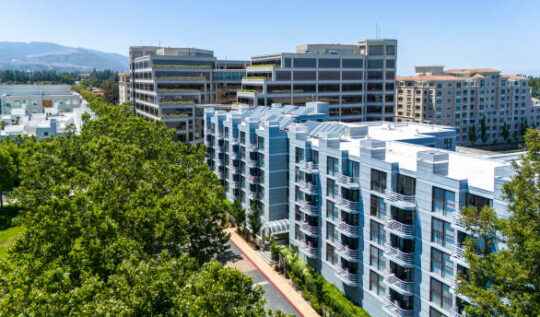LA Zoning Commission to Protect Single-Family Homes
Los Angeles is facing one of the toughest housing shortages in the nation. Rents are high, vacancies are low, and many families struggle to find affordable homes. At the center of the debate is zoning — the rules that decide what type of housing can be built on each piece of land.
Table of Contents
ToggleThe Los Angeles City Planning Commission recently recommended leaving single-family zones (R1 areas) untouched in its new housing framework. This decision sparked strong reactions. Many see it as protecting tradition, while others view it as blocking progress.
For developers and investors, the question is simple: what does this mean for the future of building in LA?
Why Single-Family Zoning Matters
Almost 72% of LA’s residential land is reserved for single-family homes. That means most neighborhoods only allow one house per lot. For decades, this shaped LA’s character — wide streets lined with houses and yards.
But times have changed. LA has grown into a major city with millions of residents. Locking up most land for single homes has created several problems:
Limited housing supply. Builders can’t add enough units where people want to live.
Rising costs. When supply falls short, both rents and home prices rise.
Uneven growth. A few neighborhoods take most of the new buildings, while others stay frozen.
Social inequality. Wealthier areas stay single-family, while denser areas — often with lower-income renters — face the brunt of change.
By keeping single-family zones off the table, the Commission is passing the pressure elsewhere.
🏘️ Did you know…?
Almost 72% of Los Angeles’ residential land is zoned for single-family homes — meaning that most neighborhoods allow only one housing unit per lot. This has major implications for housing supply, cost, and equity. (Source: LA Planning Commission analysis) 🏠
Local Control vs. State Law
The Planning Commission only makes recommendations. The City Council makes the final call. But even councilmembers face limits. State lawmakers in Sacramento have already stepped in with housing reforms.
Some of the most important laws include:
SB 9: Lets owners split single-family lots and build duplexes.
ADU Laws: Make it easier to add backyard units or granny flats.
Density Bonus Law: Allows more units in exchange for affordable housing, even if local rules say no.
These laws matter. They show that the state will not wait for cities to act. Developers who understand how to use them can move forward even when local zoning seems restrictive.
What Developers and Investors Should Expect
If LA shields single-family areas, growth will shift to other parts of the city. Here’s what that looks like:
1. More Growth in Multifamily Zones
Areas already zoned R2, R3, or R4 will see more activity. Transit corridors and mixed-use streets will carry most of the new housing.
2. Industrial Land Conversions
Empty warehouses and old factories may become housing. These projects can be costly but also present major opportunities.
3. Hidden Potential in Single-Family Lots
Even without city rezoning, SB 9 and ADU laws let owners add more units. Investors willing to take creative approaches can still unlock value.
4. Entitlements Stay Political
Every project needs approvals. In LA, those approvals depend on both law and politics. Developers should plan for community meetings, hearings, and pushback from neighbors.
The Fairness Question
Many critics say protecting single-family zones is unfair. Why should a few neighborhoods stay untouched while others carry all the growth?
This approach often hurts working-class renters. It can mean tearing down older apartments in already dense areas. Meanwhile, wealthier homeowners keep their quiet streets.
One solution is the “missing middle.” This means small-scale housing like duplexes, triplexes, or courtyard apartments. These fit into single-family neighborhoods without changing their look overnight. They also spread new housing across more of the city.
As one resident put it: “Changing zoning doesn’t erase single-family homes. It just gives owners more choices.”
🧐 Poll: What should be LA’s priority?
Opportunities in the Missing Middle
For developers, small projects may prove the smartest path forward. Instead of waiting for a big rezoning fight, they can:
Add duplexes through SB 9.
Build ADUs for rental income or family use.
Design small infill projects that blend with existing homes.
These projects are often faster, face less opposition, and still help meet demand.
JDJ’s Take: Planning for the Future
The Commission’s move is not final. The City Council could still change course. And the state may keep adding new housing laws.
But one thing is clear: Los Angeles cannot meet its housing goals without more options on single-family land. The pressure will keep building until change happens.
For now, the smartest approach is to:
Use today’s tools — SB 9, ADUs, and density bonuses.
Track state legislation closely.
Prepare entitlement strategies that consider both politics and policy.
Frame projects as solutions for communities, not just as profit-driven.
Conclusion: LA Zoning Commission to Protect Single-Family Homes
Leaving single-family zones untouched may please some, but it doesn’t solve LA’s housing crisis. Growth will shift to other areas, and state laws will keep opening doors.
For developers and investors, this is not a reason to pause. It’s a call to be strategic. Success in LA housing will come from using today’s opportunities while preparing for tomorrow’s changes.
At JDJ Consulting Group, we help clients cut through the uncertainty. Our focus is not only on zoning today, but also on where the city — and the state — is heading next.
Frequently Asked Questions
Understanding LA’s Zoning Commission Decision
▶ ▼ What is the LA Zoning Commission’s recent decision about single-family zoning?
The Commission recently recommended leaving single-family zones (R1 areas) unchanged in the proposed housing framework. In other words, most land designated for single homes will not be rezoned for denser housing.
- R1 zones are preserved as is.
- No rezoning to allow multi-unit housing in those neighborhoods.
- It reflects a choice for “local control” and tradition over densification.
▶ ▼ Why does single-family zoning matter in Los Angeles?
Because almost 72% of Los Angeles’s residential land is reserved for single-family homes, zoning in this way has big effects on housing supply, cost, and equity.
- Limits where new housing can be built.
- Drives up home prices/rents where demand is high.
- Creates uneven growth across neighborhoods.
▶ ▼ How is state law influencing local zoning decisions?
State laws like SB 9, ADU (Accessory Dwelling Unit) laws, and density bonus statutes are pushing cities to provide more housing options—even in places zoned for single homes. They give landowners tools to increase housing without full rezoning.
- SB 9 allows splitting single-family lots and building duplexes.
- ADU laws enable backyard or granny flats.
- Density bonuses allow extra units if some are affordable.
Impacts for Developers and Investors
▶ ▼ What shifts should developers expect if single-family zones remain protected?
If R1 zones stay static, development activity will likely concentrate in multifamily zones, along transit corridors, and in areas already zoned for higher density.
- R2, R3, R4 zones become more active.
- More interest in mixed-use and transit-adjacent properties.
- Industrial or underused lands may be converted to housing.
▶ ▼ Are there opportunities in single-family zones even without rezoning?
Yes — state laws like SB 9 and ADU reforms provide mechanisms to add housing on single-family lots, without needing the city to rezone them. Creative small-scale projects may be more tractable.
- Lot splits under SB 9.
- Backyard ADUs or secondary units.
- Smaller infill that blends with neighborhood character.
▶ ▼ What political or non-legal barriers do developers face in this environment?
Even if legal tools exist, approval depends heavily on politics and community sentiment. Projects often require public hearings, neighborhood input, and can face opposition. These processes can delay or block development.
- Local council decisions matter.
- Community resistance in single-family neighborhoods.
- Entitlement and hearing processes can be lengthy.
Equity, Fairness, and Neighborhood Impacts
▶ ▼ Is protecting single-family zones considered fair?
Many critics say it’s unfair because it lets some neighborhoods stay exclusive while others absorb most growth. The burden tends to fall on renters, lower-income areas, and neighborhoods already zoned for density.
- Wealthier, often whiter neighborhoods preserve zoning.
- Lower-income areas see more apartment development.
- Inequality in who gets housing access and which neighborhoods change.
▶ ▼ What is the “missing middle,” and how might it help fairness?
The “missing middle” refers to smaller-scale housing like duplexes, triplexes, courtyard apartments, etc., that fit more intensely than single homes but are less imposing than large multifamily towers. These can spread growth more evenly and provide more affordable options.
- Adds housing without big visual disruption.
- Can be built in more neighborhoods.
- Helps absorb demand while preserving neighborhood character.
What Developers and Stakeholders Should Do
▶ ▼ What should developers use today to make progress under current zoning?
They should leverage existing state-enabled tools: SB 9, ADUs, density bonuses. Even with R1 zones protected, these tools allow productive projects with fewer regulatory fights.
- Evaluate SB 9 lot splits.
- Add accessory units.
- Use density bonus programs for affordable housing.
▶ ▼ How important is staying informed about state legislation?
Very important. State laws can override or influence local zoning. Since the City Council has not made the final decision, new state mandates might force change or offer new possibilities. Keeping track lets developers anticipate shifts.
- Monitor bills that affect zoning/density.
- Watch for state vs. local legal tensions.
- Be ready to adapt project plans.
▶ ▼ What role does community framing play in project success?
Framing projects as community benefits rather than purely profit-driven helps with political and neighborly acceptance. Demonstrating how more housing can help affordability, access, or local sustainability can reduce opposition.
- Show how housing helps local workforce, transit usage, affordability.
- Design projects to blend in with neighborhood.
- Engage early with neighbors, councils.
Consequences and Longer-Term Outlook
▶ ▼ What are likely consequences if R1 zones are protected long term?
Growth will be funneled elsewhere: higher density zones, transit corridors, industrial areas. Housing shortages in much of the city will persist, prices will continue rising in single-family areas, and equity issues will deepen.
▶ ▼ Can the City Council reverse the Planning Commission’s recommendation?
Yes. The Planning Commission’s recommendation is not final. The City Council has the authority to approve changes, modify, or ignore the Commission’s suggestion.
▶ ▼ How essential are tools like density bonuses under the current framework?
They are very essential. Density bonuses allow additional units in exchange for affordable housing, offering one of the few levers to increase housing supply in constrained single-home zones. Without them, many projects become infeasible.
▶ ▼ What is JDJ Consulting’s perspective on planning for the future under these conditions?
JDJ Consulting suggests being strategic: using today’s legal tools (SB 9, ADUs, density bonuses), preparing entitlement strategies with political realities in mind, and framing housing as beneficial to communities. They believe LA cannot meet its housing goals without unlocking more options in single-family zones.





